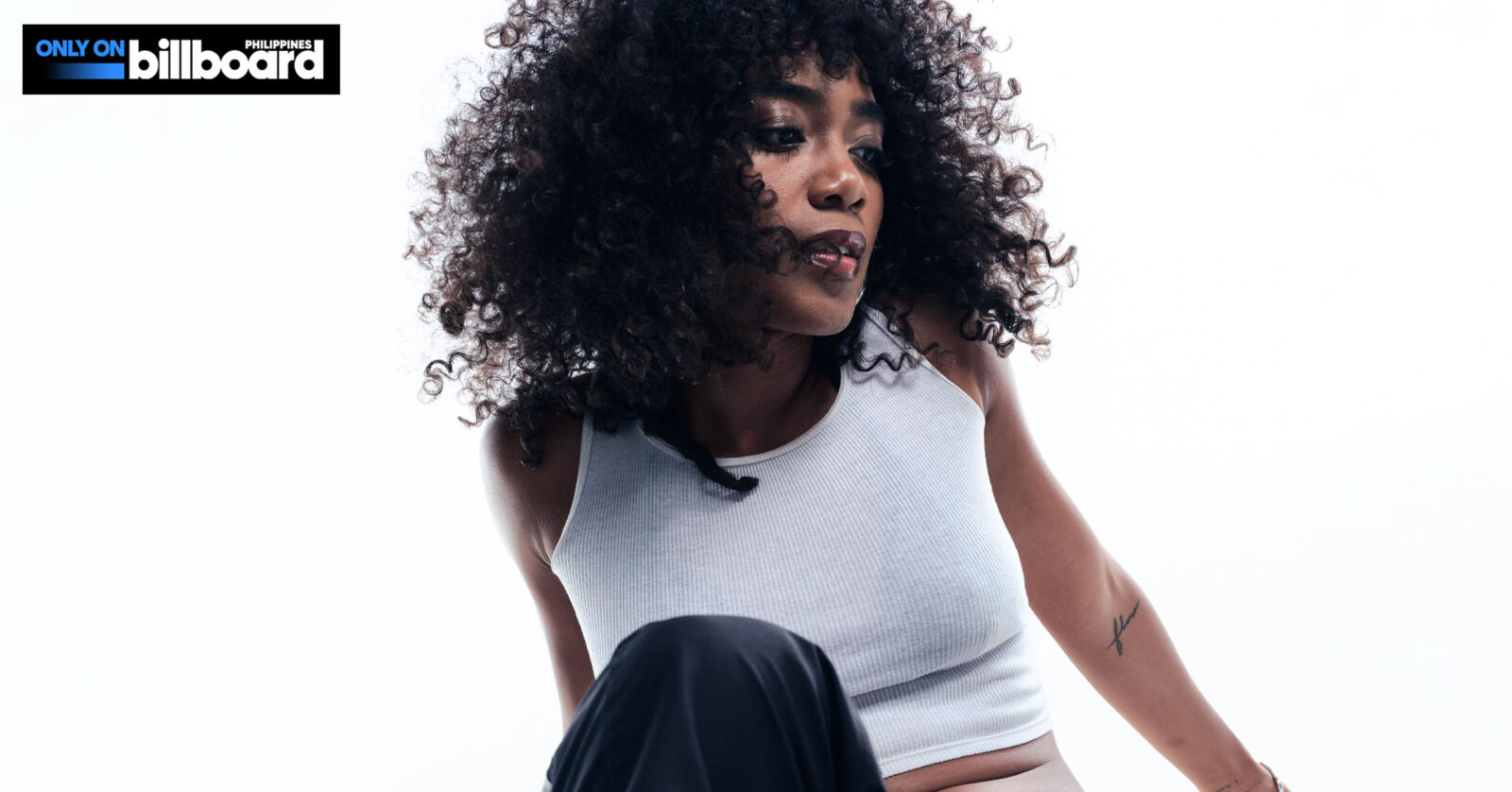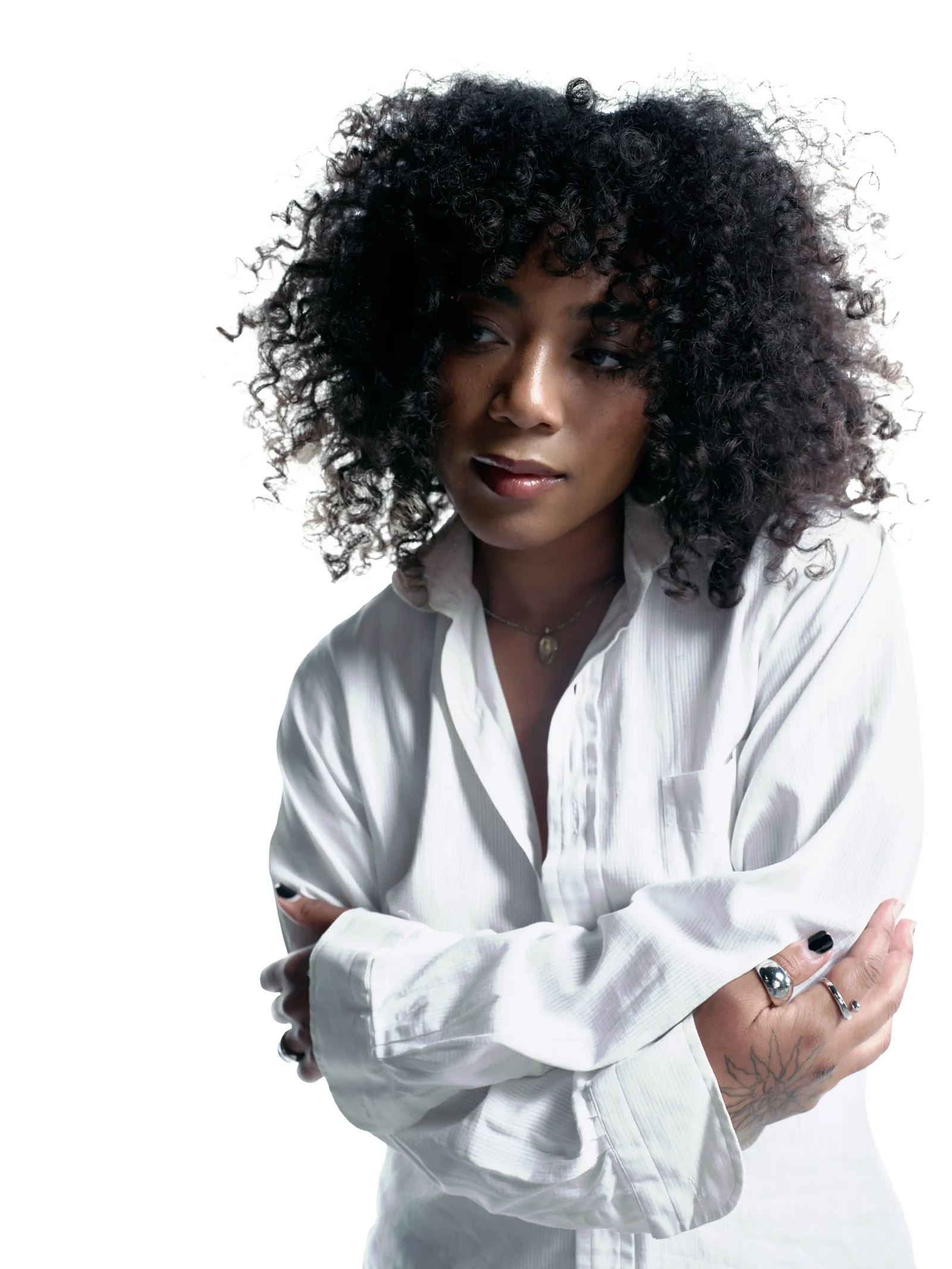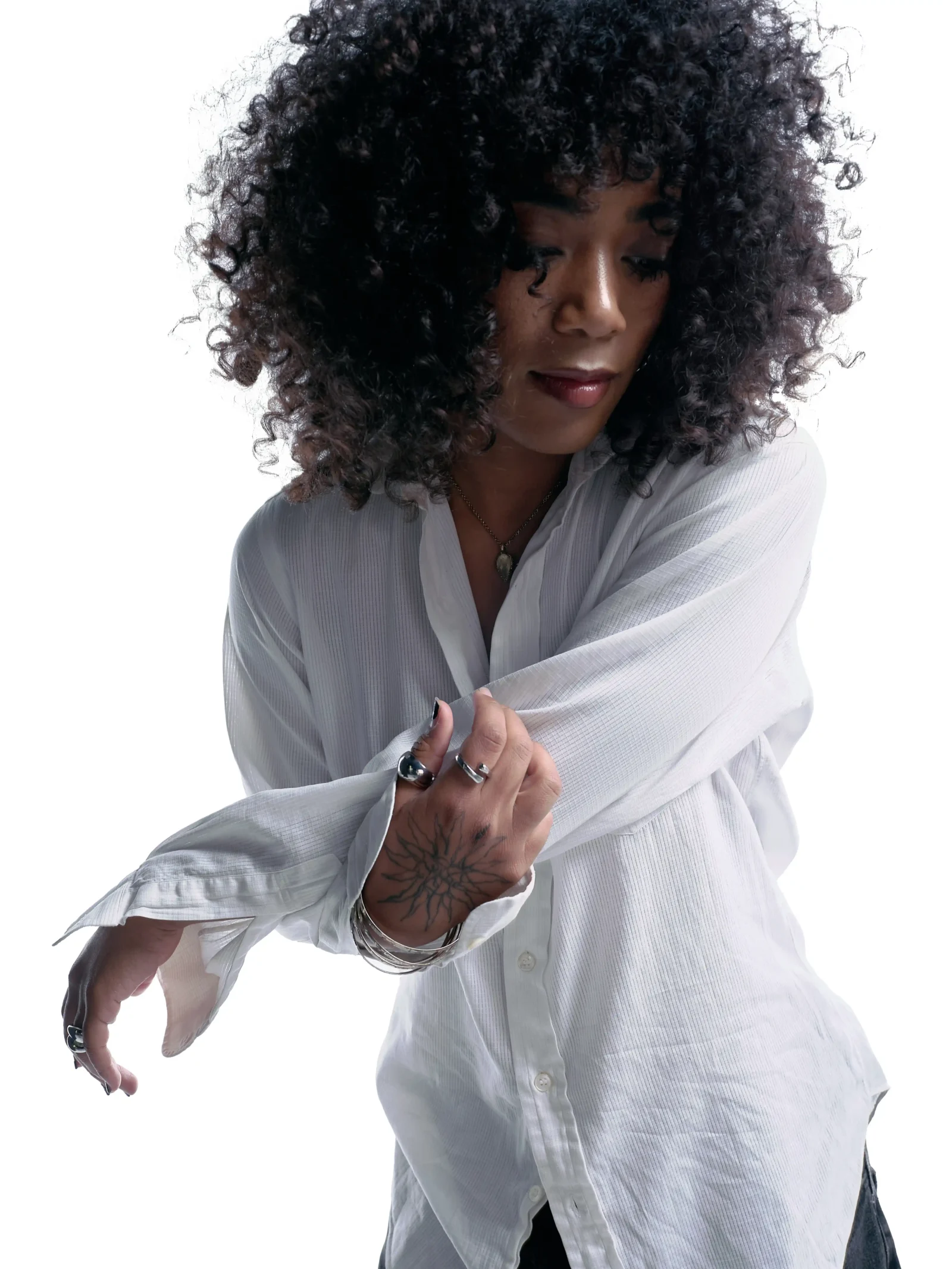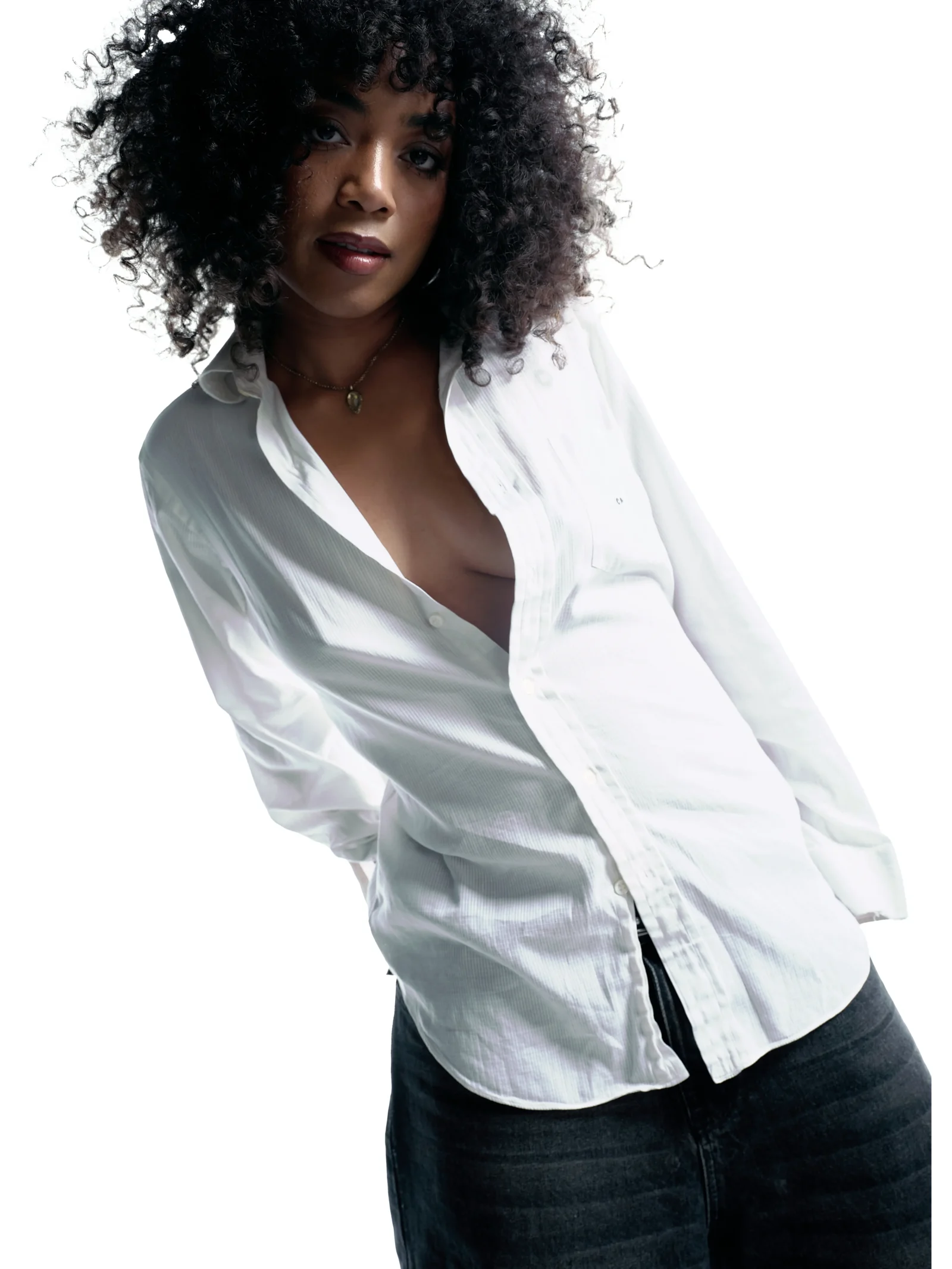UMI On Telling ‘people stories’ In New Album: “It’s been so healing.”
In an exclusive interview with Billboard Philippines, UMI delves into the nitty-gritty of her sophomore album, people stories, and the creative process that shaped it.

Courtesy of Sony Music Philippines
Courtesy of Sony Music Philippines
For her sophomore full-length album, people stories, neo-soul singer-songwriter UMI decided to become a medium in telling others’ stories.
The R&B hitmaker initially blew up in popularity in the year of 2018 onwards for her vulnerable and introspective songwriting, as well as her catchy production matched with her soulful voice. With tracks like “Butterfly,” “Remember Me,” and the like, UMI turned into a staple in the modern-day sonic landscape of soul music. Introspective writing in her early music gave her the unique edge of honest storytelling and an unabashed relatability that propelled her into the mainstream.
However, as aforementioned, UMI’s people stories, which was released on August 22, shifts the lens towards her friends, family, and fans. In this fifteen-track album, the American-Japanese artist becomes a vessel in sharing the stories of those around her. Whether it’s the simple tale of visiting the grocery store while under the influence in “GROCERY STORE” or one’s inner battle of learning to trust the process in “THE UNIVERSE,” UMI lends the perspective of others in the genre-fluid full-length feature.
On that note, Billboard Philippines delved into the nitty-gritty of UMI’s sophomore album, people stories, and the creative process that shaped it.
Billboard Philippines: Congratulations on the recent release of your latest album, people stories. So, given how the full-length feature is an ode to friends, family, and fans, how do you feel now that it’s out?
UMI: I feel happy. I feel happy because I’ve been creating and understanding this version of myself for like two years, and now I get to share that with the world and be that person outside of myself. I think, as an artist, that’s a very satisfying feeling. Because the album is really based on the fans and their stories, it makes me excited to go do the tour and connect deeper with everyone.
You recently premiered a music video for “RIGHT/WRONG.“ The energy has been reminiscent of the late ’90s or early 2000s. Was this move intentional?
Yeah, actually, it was because a lot of this album for me was about becoming the girl that I used to look up to when I was little. I used to watch MTV music videos like every single day before school, looking at videos like that, being like, “I’m going to be like her when I grow up!” And now I’ve grown up and I am like being her. So, I feel like I intentionally did that to really heal and bring that part of me with me.

Courtesy of Sony Music Philippines
Who are your biggest inspirations from early 2000s R&B?
I love Destiny’s Child. I love Aaliyah. I love Brandy. I also love like Erykah Badu from that time. I love Lauren Hale, D’Angelo. So I feel like a mixture of R&B and R&B neo-soul is something I always loved.
I really hear pieces of them throughout your discography. The overall narrative of this album follows a more introspective angle, where you talk about other people’s stories from the perspective of your own. How did you arrive at this particular concept? What did it take for you to enter the state of mind?
So, the album concept came to me actually when I was on tour in Amsterdam. And this fan came up to me and was like, “This is my boyfriend. We met because we love your music, and on our first date, we went to eat Thai food, and the mango sticky rice there is delicious. So, you should come if you’re free. I want to take you out to dinner. I was like, okay. So, my band and I, we all went to go eat dinner with these fans. The fans told me about their love story, and while we’re eating mango sticky rice, I just had the idea, like, “I’m going to write a song about their love story.” And then when I started writing it, I was like, “Oh, I’m going to do a whole album based on this concept.”
So, it (people stories) was born from an interaction with the fan. Then it turned into a whole project. It’s been so healing and nice because I think when you write about other people and you become them, you also find parts of yourself in other people’s stories. I think that’s a very beautiful experience.
So, was “MANGO STICKY RICE” the first song that you composed?
Yes, it was the very first one.

Courtesy of Sony Music Philippines
So on that note, which song of the album was the easiest to come up with? Conversely, as well, which one took the longest to complete?
That’s such a good question. I think a song like “GROCERY STORE” and the very opening track “SOMETIMES,” and also “RIGHT/WRONG.”
I wrote all the songs as a freestyle. I wrote it and I finished it that day, so those were really easy. But the songs that were hard are songs like “SAFE ROOM” towards the end of the album. The songs towards the end were very hard. “SAFE ROOM” and “10AM” — both those songs, I probably recorded like five times.
Because it’s one thing to sing a song, but if you don’t feel yourself or you don’t feel it, then it’s not the cut. I couldn’t get there because I had to do a lot of self — like, clearing? — to then be able to sing it. So, those were frustrating. I almost didn’t even put them on the album because I was so frustrated about singing them
But now they’re out!
Now they’re out! I did it!
On “HARD TRUTHS,” you have your only collaborative piece for the album with 6lack. What was it like working on him, especially on such a deeply intimate and brutally honest piece?
It was actually such a smooth experience because we had met at an open mic, and we just kind of became internet friends. Every time he would be in L.A., I would pop up to show his shows, and any time I was in Atlanta, he would come to my show, and we are just good artist friends. Then randomly, I was like, “Do you want to make music together?” So, I sent him a folder of songs. He picked “HARD TRUTHS,” and I didn’t even think I was going to put it on the album.
But when I got his verse back, I was like, “This is so special.” So, it became part of the album. But I think because neither of us went into it with like a very harsh expectation. I think even though the song was very, like you said, like very brutally honest, it was still really organic.

Courtesy of Sony Music Philippines
This next question is a personal curiosity of mine. I wanted to ask, what does your knowledge and practice with meditation and sound healing play into your production and songwriting?
Oh, that’s so fun. I think the more you understand about sound healing and just healing in general, the more you realize, like, there’s so much that you don’t see that impacts us, our thoughts, our bodies. Music is one of the most powerful ways, I think, to impact and touch people, and so when I sing, I really think about the energy of what I’m singing.
When I’m singing a song, I really hold the feeling of the song in my heart, and I sing that. I think that it’s like (a practice of) imprinting the energy into sound when I’m playing instruments. It’s like using feeling, not logic, to determine if something is the right sound. I think that’s so important. I think a lot of the music industry uses logic to make music, and I think that sucks the soul and the spirit out of music. (Having) spirit in music is what makes music so infinite, you know. So, I hope to bring that back on a large scale through my music.
On that note, how would you describe the soul and the spirit of people stories?
Ooh, that’s such a fun question. I think the soul and the spirit of people stories, she’s like a mature woman. Like, she’s a grown woman. But she also kind of has this grandmother energy to her, too, because the album is very wise. And I have those therapy sessions interwoven into the album, which feels very grandmother-esque. And the color of the album to me is very red, like a dark pink and orange.
people stories marks your latest album since 2022 with Forest in the City. Looking back, what did you approach differently in your creative process this time around? Especially now that you feel that people stories is a more mature perspective.
I think Forest in the City was something that it was more of a collection of songs about where I was at in my life. And I just knew if I didn’t get it out, I wasn’t going to be able to move forward. So, it was more like a time stamp of where I’m at versus people stories, where before I even started, I had the concept. I knew who I wanted to work with. I knew the colors. I knew the sounds. So, it was more like a very focused project. In that way, I think it’s more of a… I mean — I love all my albums. But I do feel like this is a very accurate representation of who I am. And I’ve learned the skill of expressing myself better than I ever have.
I really love that! Is there anything I’ve yet to ask you that you’d want to share for the article?
Well, I would just love to remind people to follow me on my socials on TikTok and Instagram. Then also that I just launched a new app called Medallion, and I’m putting up weekly meditations on there. So if people are interested in learning more about meditation, it’s a great center for learning about that.